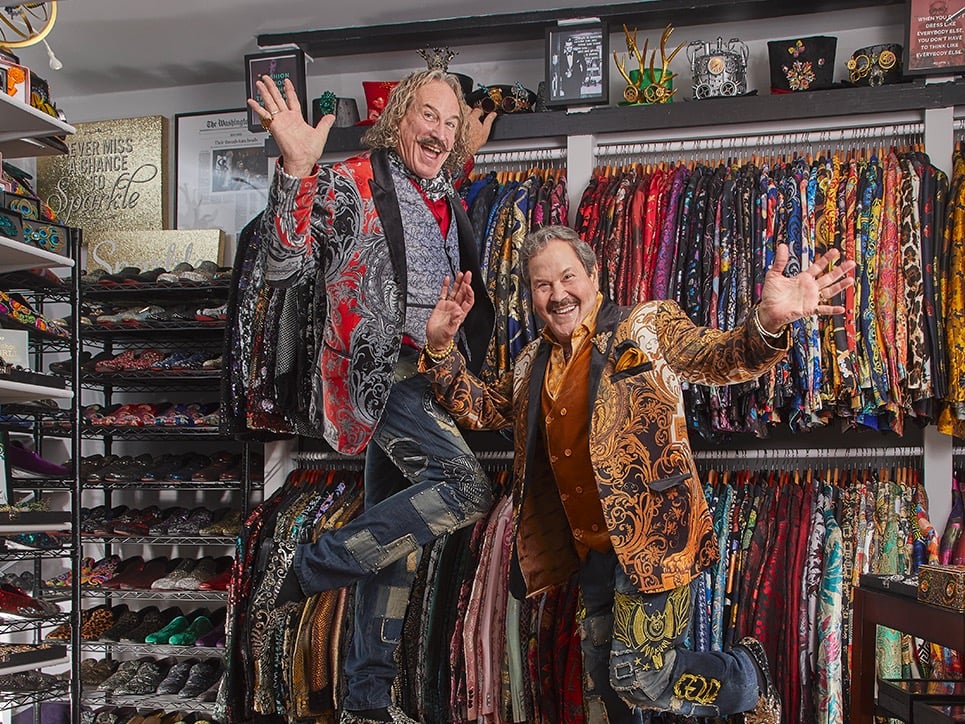By Lisa Shroder
I cross the line from annoyance to rage sometime between November and New Year’s.
The issue is $100, not a life-altering sum. But it’s what I have to pay my home-security company to reconnect a line severed by a Verizon repairman, who mistook it for a discontinued phone line.
I call Verizon to explain the situation. I figure someone at Verizon will look up our records, note the repair, see that we’re established customers. Then someone will apologize and reimburse us for the security company’s $100 repair.
Instead I get hours of automated voice menus and waits on hold, a series of service representatives, broken promises, and alleged transfers to departments that click into dead air—a journey familiar to millions of unhappy consumers determined not to let their complaints be brushed aside.
Is Anybody There?
If you were to diagram where things go wrong, you’d have to start with the phone calls. Each call goes to an interactive voice response system, or IVR. This is the voice that asks you to press “one for English, dos para español.” The voice that asks you to punch in your telephone or account number. The voice that lists a menu of departments—often minus the one you seek. The voice that eventually has you press zero or wait on the line to speak with a customer-service representative.
Paul English, a Massachusetts software engineer, became so fed up with IVRs that he started seeking ways to circumvent them and then keeping a cheat list on his blog. The list spawned a Web site, GetHuman.com, to accommodate all the tips he got from company moles. The secret codes to more than 500 companies are listed, and more than a million people have flocked to the site.
Citi Cards has caught on to public sentiment against IVRs. “We really wanted to understand what consumers were concerned about,” says Ed Eger, chief operating officer of international cards. The company learned two things: People wanted it to do away with late fees for good customers, and they wanted to talk to a human being.
Citi’s response was the Simplicity card, which offers both features, advertised in a television campaign. Two ads featured a man whose credit-card statement has gone astray, placing him in absurd situations as he tries to retrieve it and pay on time.
In another series of ads, a man frantically and futilely punches numbers on his kitchen phone in response to an IVR while the steak he’s cooking catches fire. In another, a man boards a train while talking to an IVR by cell phone, repeating his code (“big boy”) aloud, responding “no” to a query as to whether he’d like a shinier card, and finally connecting with a human, only to lose the call as the train enters a tunnel.
The ads struck a nerve with customers, Eger says. Citi doesn’t offer the same feature on its other cards because “obviously, this increases our cost.” But the company is considering it. Citi executives think they’ll recoup the additional cost by getting more customers.
Cost is the main reason for IVRs. To cut costs even further, some call centers are outsourced to places like India. The Society of Consumer Affairs Professionals, based in Alexandria, initiated a study in 2003 on customer contacts; it was conducted by Technical Assistance Research Programs, an Arlington customer-satisfaction firm. The study found that the median cost to the company of a toll-free call to an IVR was 65 cents. A toll-free call handled by a staffer cost the company $4.93.
“Companies live in a very cost-driven environment,” says Scott Broetzmann, president of Customer Care Measurement & Consulting, an Alexandria firm that works with Fortune 500 companies. And the cost of a person is growing—which is why IVRs aren’t going away.
For three years, the Customer Care Alliance, an Alexandria consortium to which Broetzmann’s firm belongs, has conducted what it calls the Rage Study. It culls the results from a telephone survey and, in part, compares those with the results of a 1976 White House study from the Office of Consumer Affairs.
In 1976, 32 percent of people surveyed had a serious problem with a product or service in the past year. In the 2005 Rage Study, 39 percent did.
“If anything, the study we’ve done underestimates the problem,” Broetzmann says, adding that the Rage Study didn’t offer a list of prompts to jog people’s memories, as the White House study did.
Of those 39 percent who had a serious problem, 70 percent experienced rage over the handling of their complaint. The three industries that provoked the most anger: financial services, travel and leisure, and telephone services. One of the main complaints: Companies undervalue the importance consumers place on time.
The median time spent listening to an IVR message, Broetzmann says, is more than 50 seconds. When you add all of the other things companies cram onto them—such as ads for their Web sites or new products or, as in my case, asking for my number not once but twice—“it’s a lot of time.”
And that’s just to start: Paul English has learned from visitors to GetHuman.com that the average wait time on a complaint call is 38 minutes. The median time ultimately spent pursuing a complaint, according to the Rage Study: two hours.
English lists the attributes of good versus bad IVRs on his site. Good: lets him hit zero at any time to speak to a human, tells him the wait time, recognizes him by caller ID, has him enter a personal identification number to authenticate his identity, lets him rate the call at the end, and lets him disable the music. Bad: is verbose, telling him his call is important—“If my call was important, you’d have a human answering the phone”—and on and on.
It all goes back to time. “To make me push 15 buttons to get to a human being has no benefit to me,” says Ronald Goodstein, an associate professor at Georgetown University’s McDonough School of Business who specializes in marketing and consumer behavior. “Good customer service means not making it more convenient for the company but making it more convenient for the customer.”
Help—I Need Somebody
When I finally reach a Verizon customer-service agent, she tells me a foreman from the repair service will call me back. More than a week passes. I call again—going through the IVR menu all over again—and reach another agent, who asks for the phone number I’ve just punched in. I’m told a foreman will call back. I wait a couple of days. No call.
I call again, this time insisting the agent get someone to help me. I’m connected with a harried-sounding man who tells me he’ll have someone call me back. I tell him I want help now. He puts me on hold, then tells me he has talked with a supervisor and my problem will be resolved. I offer to fax the invoice from my security company and, after doing so the next day, think the ordeal is over.
Sometime later, our bill arrives: no reimbursement for our security-company repair. I start over again.
I set aside an hour one morning to call. During that hour, I’m disconnected four times as customer-service agents try to transfer me to a supervisor. Each time, I have to repeat the IVR experience, then repeat my story to a new agent. By the third call, I’m wondering why telephone-company employees can’t transfer calls.
I wonder whether they’re company employees or the calls are outsourced. According to the 2003 customer study, 69 percent of the companies surveyed handle toll-free numbers internally—which means about a third outsource them. Back in 1992, 81 percent of toll-free numbers were handled internally.
By my fourth call, I’m wondering if they’re trying to make me go away.
Consumer-affairs reporter David Horowitz has experience with companies giving customers the runaround. His TV show, Fight Back! With David Horowitz, was on the air 18 years; he now writes a column and does radio broadcasts. He started a Web site, FightBack.com, in the early 1990s, filled with stories of unhappy customers.
“Some stores would rather hold the consumer to the point where they’re ready to burst,” he says, “and then take care of the problem or hope they walk away.”
Experts often use the word “shortsighted.” Georgetown University’s Ronald Goodstein: “The most important customer a company has is its loyal consumer. These are the people you don’t want to make mad.”
When a company has a service breakdown, he says, it needs to do a good job of resolving the problem. If the company succeeds, he says, “you’ll have a higher probability of loyalty than if you’d never had a problem at all.”
Horowitz includes stories on his site about companies that have responded well: “I’m happy when we get to give kudos to a company for customer service.”
Not long ago, he wrote about JetBlue Airways sending inconvenienced travelers a personal letter and a $25 gift certificate. Horowitz learned about what happened because his wife, who uses a different last name, happened to be on that flight. Since then, in response to publicized complaints, the airline has taken things a step further with a bill of rights for passengers.
On a smaller scale, I encounter a Starbucks in Fairfax that frequently hands out coupons for a free drink to customers who feel they’ve waited too long or been given a mocha instead of a macchiato. Manager Susan Gagnon doesn’t know what it costs the company to do that. But the good will? Priceless.
Is It Getting Any Better?
Consumers who have been burned tend to see their bad experiences as evidence of a corporate culture caring less about its customers’ problems and more about profits.
Is customer service really deteriorating? The 2003 customer study suggests that companies are hiring fewer full-time customer-service agents and that a smaller percentage of companies is training toll-free representatives than a decade ago.
Lou Garcia, executive director of the Society of Consumer Affairs Professionals, still says, “I don’t think it’s in decline.” He notes that more companies offer Web sites and toll-free numbers, giving consumers more avenues when they have a question or complaint. Buy something at Macy’s or Old Navy and you’ll be asked to visit the Web site to comment on the service you received—often with the offer of 10 percent off your next purchase.
But Customer Care’s studies show that 33 percent of consumers believe customer service has worsened. Broetzmann’s view: “In this case, perception is reality.”
Each man has a vested interest: Garcia’s organization is made up of people who provide customer service; Broetzmann’s firm consults with companies that want to improve customer service.
So we turn to the academic, Ronald Goodstein. “One fundamental thing I teach is ‘I am not interested in doing business with a customer one time,’ ” Goodstein says. “Too many companies think short-term.”
He tells the story of the Washington Post’s advertisements for free weekday newspapers to people who subscribed only on Sunday. Goodstein had been a subscriber for seven years and called to get the advertised rate. He was told it was available only to new subscribers.
“That says a new customer is more important than me,” he says. He canceled his subscription.
Walking away from a newspaper subscription is easier than walking away from a two-year cell-phone contract or the only cable company in town. Broetzmann calls such impediments “barriers to exit.” They do exist, he says, but “eventually those barriers loosen up, and you start to see a stronger relationship between service and profitability. Eventually, it catches up to you.”
Says Goodstein: “One of the things I look for is a company that truly believes it has the best products and services. They don’t need to put up barriers.”
It comes back to money. “We’ve done some studies to look at the kinds of things that consumers really like and don’t like,” Lou Garcia says. “They care about service, but they also care about price.”
Goodstein points out that airlines save money when customers buy tickets online. All they’ve had to do to make most customers willingly forgo dealing with a human being is to pass some of the savings on to the customer—lowering the online price by $20.
“At the other end,” says Broetzmann, “are companies that really charge a premium for the customer-care service. You always read about Nordstrom.”
Nordstrom—a department store arguably priced for the upper-middle class—comes up anecdotally as a company that goes out of its way to keep customers happy. Spokesman John Bailey says Nordstrom typically doesn’t comment on customer service: “We don’t consider ourselves the experts.”
At this very moment, Bailey adds, there’s undoubtedly someone somewhere unhappy with Nordstrom’s service. He says service is the company’s number-one goal, but “we’re not perfect.”
There is no formal policy on returns or formal employee training: “We just try to hire nice people.”
The Loneliest Number
During my many calls to Verizon—referred to as “ping-ponging” by the people who study customer contacts—I encounter people both nice and indifferent.
I reach one man in the repair-service department who tells me that only the billing department can issue a credit. Another argues with me, asking how Verizon can be certain its repairman actually cut my line. The most I get is assurance that a supervisor will call.
A day or two after my last call, a supervisor calls my husband, tells him the fax we sent months earlier can’t be found, and asks that we send it again. We do so but hear nothing more. ➝
Julie Snyder, a producer on public radio’s This American Life, had a similar experience. Her long-distance carrier, MCI, overcharged her by more than $900, and she went through nine months of being transferred, being told different things by different people, and faxing documents to offices where she was told there was no phone to confirm their arrival.
“They had brought me to my knees,” Snyder says.
Eventually, her boss, This American Life host Ira Glass, suggested they call the company together and tell them they were recording the call with the idea of possibly doing a story. Within a week, her problem was solved.
“I was very doubtful when Ira suggested we call,” she says. “You feel so powerless, and they seem so powerful.”
Afterward, Snyder and Glass requested an interview. MCI vice president Jim Myers not only agreed but gave out his e-mail address on air. The program aired in December 2003.
The show garnered the most response of any This American Life aired up to that point, and it has been rebroadcast. The staff heard from listeners with the same problem and worse. They heard from customer-service representatives working for outside agencies that handled company calls who told her “the goal is to get the customer off the phone as quickly as possible: Deny, deny, deny.”
After not hearing back from Verizon, I type “Better Business Bureau” into Google and come up with the organization’s home page. At the top is a button for filing complaints online, and I fill out the form.
Less than a week later, I get a message on my cell phone from a woman who says she’s from the Verizon Appeals Team. She says Verizon received the Better Business Bureau complaint and will credit my account $100, and for the first time I’m given a direct number to call at Verizon. The next day, I receive a letter from the Better Business Bureau checking to see if my problem was resolved.
In Customer Care’s Rage Study, only 4 percent of respondents took their complaints to government agencies or the Better Business Bureau. “That’s because they think it’s not worth the time or trouble,” Broetzmann says.
Months later, I leave a message at the Verizon number requesting an interview. The woman never calls back. I decide the phone hasn’t been a successful means of communication with the phone company, so I e-mail its media-relations department. I ask for an interview and explain that I had a problem with Verizon that was resolved and that I want to understand the process for my article.
I imagine some nice vice president like MCI’s Myers calling back. Perhaps he’ll tell me about consumer fraud—witness the former White House aide who allegedly tried to defraud Target by returning stolen property—as a way of explaining the company’s reluctance to accept blame. Perhaps he’ll tell me the customer-service representatives work for an outside agency and that’s why they couldn’t transfer my calls or get someone to call me back. Maybe he’ll just say he’s sorry.
In the Customer Care Rage Study, 73 percent of those surveyed wanted an explanation of what had gone wrong. Only 18 percent got one. Broetzmann refers to that desire as “psychological currency, conversations with dignity.”
My conversation with dignity never takes place. Instead I receive an e-mail from Christy Reap in Verizon’s DC media-relations office. Her message reads, in part: “Lisa: Overall, Verizon provides excellent customer service to millions of our customers. Our reps and call center employees are trained to effectively service customers and to resolve any problems. . . . While we appreciate your curiosity as to the process for resolving issues, we respectfully decline to elaborate on our procedures.”
I look Verizon up on the American Customer Satisfaction Index, a quarterly measurement of Americans’ attitudes toward companies they do business with. The index is produced in part by the Stephen M. Ross Business School at the University of Michigan and shows a 73.5 percent satisfaction rate for companies overall. Verizon scores a 70, in the middle of the fixed-line phone companies listed. Like all the phone companies’, its satisfaction level went down last year.
Reap’s e-mail goes on to say that if I intend to share my experience publicly, I should forward the details so she can look into them.
I send her an e-mail detailing what occurred, interspersing such questions as how a phone company could cut me off four times and whether its customer-service representatives are Verizon employees. She answers only one question in her next reply: Yes, the representatives are Verizon employees.
Ten days later, I receive a final e-mail that tells me “correct procedure was followed.” It goes on to say: “The overall chronology indicates your needs were cared for. This, however, does not mean we do not take responsibility for the inconvenience and time you spent getting your issue resolved.”
I think about Georgetown University’s Ronald Goodstein and his response when asked if companies ever deliberately stonewall a customer: Companies, he says, have service tiers—platinum, gold, iron, and lead. As soon as you enter your number, they know what kind of customer you are, whether you’re profitable to them or not.
Valarie Zeithaml, associate dean of the Kenan-Flagler Business School at the University of North Carolina at Chapel Hill, writes about this—she coined the term “customer pyramid”—in a 2001 article. She notes that one bank color-coded its customers. When a green square pops up on the computer screen, the bank knows that customer is profitable and deserving of extra help. When the square is red, forget any kind of slack for a bounced check.
And yes, the article notes, telephone companies such as AT&T have state-of-the-art service centers that identify customers according to the service pyramid. Where they route the call and how long they spend on it are based on where the customer falls on the pyramid.
All this seemed to confirm what I suspected during those months of dropped phone calls and unacknowledged faxes. After years of local and long-distance service, multiple cell phones and service contracts, and paying my bills on time, I thought my relationship with Verizon was golden. But all along, a computer screen deep in the bowels of the company must have been flashing my number alongside a gray square. For lead.
Lisa Shroder is a writer in Northern Virginia.















